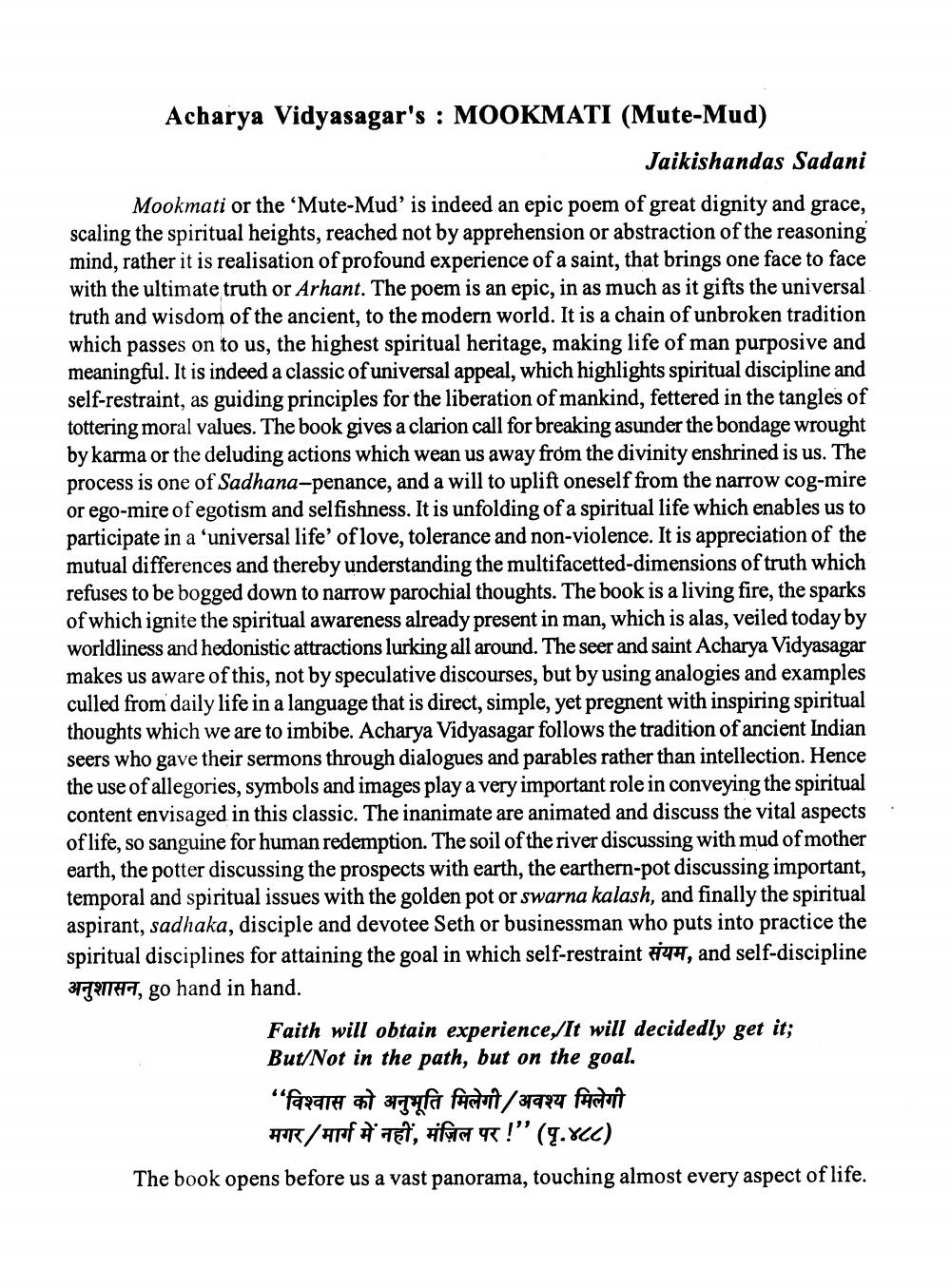________________
Acharya Vidyasagar's : MOOKMATI (Mute-Mud)
Jaikishandas Sadani
Mookmati or the ‘Mute-Mud' is indeed an epic poem of great dignity and grace, scaling the spiritual heights, reached not by apprehension or abstraction of the reasoning mind, rather it is realisation of profound experience of a saint, that brings one face to face with the ultimate truth or Arhant. The poem is an epic, in as much as it gifts the universal truth and wisdom of the ancient, to the modern world. It is a chain of unbroken tradition which passes on to us, the highest spiritual heritage, making life of man purposive and meaningful. It is indeed a classic of universal appeal, which highlights spiritual discipline and self-restraint, as guiding principles for the liberation of mankind, fettered in the tangles of tottering moral values. The book gives a clarion call for breaking asunder the bondage wrought by karma or the deluding actions which wean us away from the divinity enshrined is us. The process is one of Sadhana-penance, and a will to uplift oneself from the narrow cog-mire or ego-mire of egotism and selfishness. It is unfolding of a spiritual life which enables us to participate in a 'universal life' of love, tolerance and non-violence. It is appreciation of the mutual differences and thereby understanding the multifacetted-dimensions of truth which refuses to be bogged down to narrow parochial thoughts. The book is a living fire, the sparks of which ignite the spiritual awareness already present in man, which is alas, veiled today by worldliness and hedonistic attractions lurking all around. The seer and saint Acharya Vidyasagar makes us aware of this, not by speculative discourses, but by using analogies and examples culled from daily life in a language that is direct, simple, yet pregnent with inspiring spiritual thoughts which we are to imbibe. Acharya Vidyasagar follows the tradition of ancient Indian seers who gave their sermons through dialogues and parables rather than intellection. Hence the use of allegories, symbols and images play a very important role in conveying the spiritual content envisaged in this classic. The inanimate are animated and discuss the vital aspects of life, so sanguine for human redemption. The soil of the river discussing with mud of mother earth, the potter discussing the prospects with earth, the earthern-pot discussing important, temporal and spiritual issues with the golden pot or swarna kalash, and finally the spiritual aspirant, sadhaka, disciple and devotee Seth or businessman who puts into practice the spiritual disciplines for attaining the goal in which self-restraint 19h, and self-discipline 37TTHF, go hand in hand.
Faith will obtain experience, It will decidedly get it; But/Not in the path, but on the goal.
"विश्वास को अनुभूति मिलेगी/अवश्य मिलेगी HR/hrf# TET, wife !" (9.8cc)
.
The book opens before us a vast panorama, touching almost every aspect of life.




